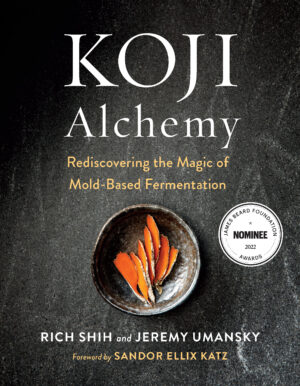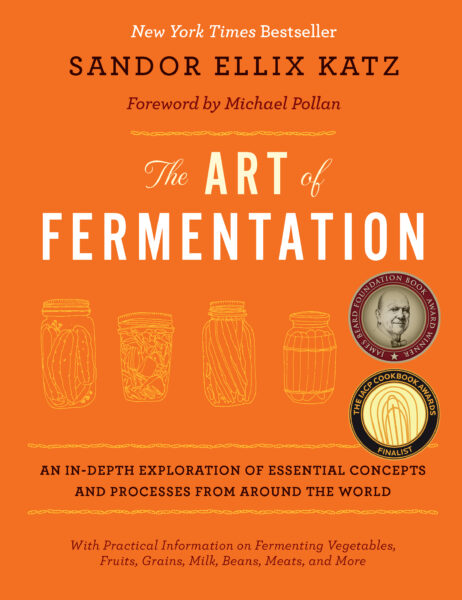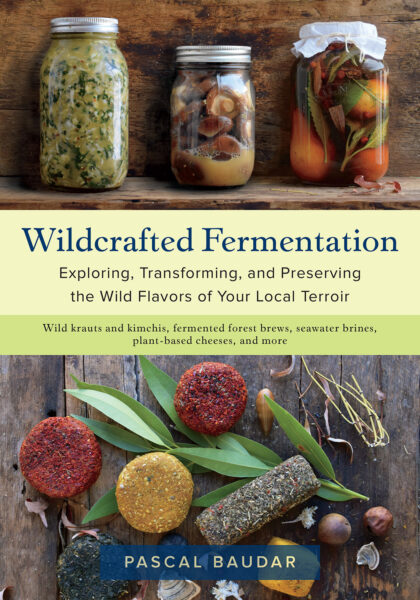Welcome to the Wonderful World of Koji
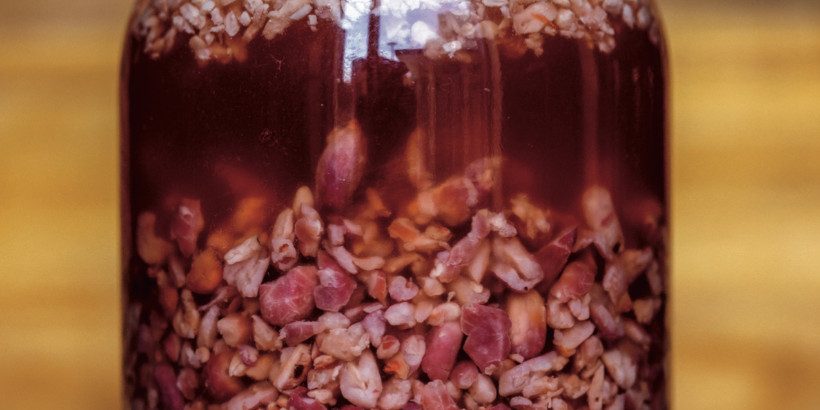
What if we told you there’s a world of flavor that you’ve never tasted before? There is, and it all starts with a little mold called koji! In the right hands, koji makes anything taste better, from bread to cheese to ice cream. Check out our post on growing your own koji to get started.
The following is an excerpt from Koji Alchemy by Jeremy Umansky and Rich Shih. It has been adapted for the web
Photo by Andrew Wang.
There was a time when sitting down with family and friends at a table to share a meal was commonplace. It was a communal table where you could enjoy others’ company without feeling like you had to do anything else; a time you looked forward to because you were welcomed by nourishment and people who cared; a daily forum to talk about anything you liked—from who you met that day to the deepest personal revelation; a place where you were comfortable sharing your emotions knowing that even if things got heated with disagreement, at the core everyone sitting at the table had your back. This may seem a romantic notion for most of us, but it’s not.
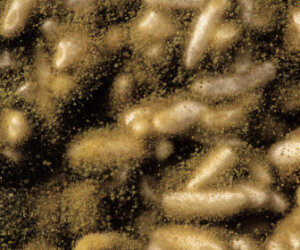
Photo by Peter Larson
Yes, it’s become rare to sit at a table and enjoy a meal together. Most times folks are engaged in looking at a screen while wolfing down something out of a take-out container or plastic wrapper more for fuel than for joy. Somehow the industrial and green revolutions convinced many of us that cooking a meal is a burden. But there’s a community starving for something more: the amazing food revolution—still in its infancy—of people who are fermenting vegetables (sauerkraut, kimchi, hot sauce, and the like), making their own charcuterie, raising chickens, learning whole-animal butchery, and foraging. An interest in koji has been running alongside this fermentation fever and is becoming more and more mainstream. We’re here to show you the significance of this food revolution.
Koji is a specific mold grown on a starch medium that can make food extraordinarily tasty if you simply mix a few ingredients together and wait. Alchemy is a power or process that changes or transforms something in a mysterious or impressive way.
You may not know what koji is, but you’re intrigued by what you’ve heard it can do. Maybe you’ve been told that it smells like the most intoxicating combination of grapefruit, chestnuts, honeysuckle, and mushrooms. It may sound hard to believe, and you want to taste what’s actually possible. Well, it’s likely you already have. You probably even have a bottle of it in your pantry right now. We’re talking about soy sauce, a widely enjoyed condiment that is part of the common culinary language practically everywhere in the world, a familiar friend and a known tasty quantity that you’ve been dipping dumplings and sushi in longer than you can remember. Let’s not forget the countless splashes you’ve added to marinades as a tried-and-true accent to make whatever you grill, sauté, or roast shine. As delicious as soy sauce is, it only scratches the surface of what can be done with koji.
To help make it easier to understand in application, we like to describe koji as a seasoning. Consider salt—the most basic seasoning that makes everything taste better. We’ve all experienced food that lacks the right amount—and we also quickly understand when there’s too much. Think about a tomato at peak ripeness to be sliced and eaten. Now remember when you tasted the mind-blowing flavor of that tomato when you sprinkled a touch of salt over it; it’s possible you can’t imagine eating it any other way. The same goes for the primary driver of koji, umami (flavor body). Have you ever tried making a sauce without the bits of meat stuck to the pan after searing, aged cheese, mushrooms, tomato, seaweed, miso, or the like? The results will be missing depth of flavor, one that cannot be realized without amino acids, the fundamental components of proteins.
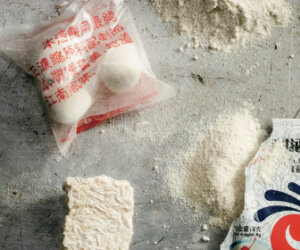
Photo by Peter Larson
We are wired to taste umami and feel satisfaction, because it’s an indicator of nutrition. When food lacks this savory taste, our bodies tell us it’s not fulfilling. That’s why we simmer water with bones to create a stock that ultimately makes a soup more satisfying, which doesn’t take much protein to achieve. However, the ability to coax the flavor and nutrition out of protein requires cooking skills and/or preservation methods driven by heat, microbes, and time. The magic of koji is its ability to give us delicious foods with less effort and time. In some cases it works overnight. Simply applying koji to foods ahead of cooking leverages enzymes to accelerate the flavor generation process; the food is already delicious before you start. Koji works in concert with practically any food preparation technique you know, with very little adjustment.
On the sweet side of things, we are forever chasing ultimate fruit ripeness for the sugars. Sweetness is another flavor element that is an indicator of essential nutrition, and one that we are always craving. Picking and eating berries at the peak of flavor in the summer is the best. However, it’s uncommon to constantly have access to fruit at its optimal ripeness. As a result, we make adjustments by adding a touch of sweetness, sprinkling a touch of sugar or drizzling a little honey to bring balance. What if there was a seasoning that would allow you to sweeten the fruit with its inherent starch? If it’s not quite ripe, a touch of koji will soften and sweeten it up to be just right. If fruits happen to be on the way out, a purée with koji will yield a sweet porridge that can be spun into a vegan ice cream. Sugar is enjoyable in itself—but the importance of kojifying food goes way beyond that.
Recommended Reads
Recent Articles
Introducing…your new favorite brunch dish! This whole broccoli frittata is packed with fresh, wildcrafted flavors that are bound to help you start your day off on the right foot. The following is an excerpt from The Forager Chef’s Book of Flora by Alan Bergo. It has been adapted for the web. RECIPE: Whole Broccoli Frittata…
Read MoreWondering where to forage for greens this spring? Look no further than hedges, which serve as natural havens for wild greens and herbs! The following is an excerpt from Hedgelands by Christopher Hart. It has been adapted for the web. Food from Hedges: Salads and Greens Let’s start by looking at all the wild foods…
Read MoreThere’s a whole new world out there when it comes to koji. It doesn’t matter if you’re making bread, cheese, or ice cream, koji helps you pump up the flavor! Growing Koji in Your Own Kitchen Koji, the microbe behind the delicious, umami flavors of soy sauce, miso, fermented bean sauce, and so many of…
Read MoreWhether you’re looking to replace your end-of-the-day cocktail, relax before bed, or want something new to add to your tea, this non-alcoholic mocktail syrup base will do the trick. Delicious and all-natural, take a sip of this nightcap mocktail and feel your troubles melt away. The following is an excerpt from Herbal Formularies for Health…
Read MoreWant to enjoy bread without worrying about gluten? With Einkorn bread, a light bread with the lowest glycemic index, you can still enjoy all of the delights of bread. without any of the allergic reactions! The following is an excerpt from Restoring Heritage Grains by Eli Rogosa. It has been adapted for the web. Einkorn…
Read More

